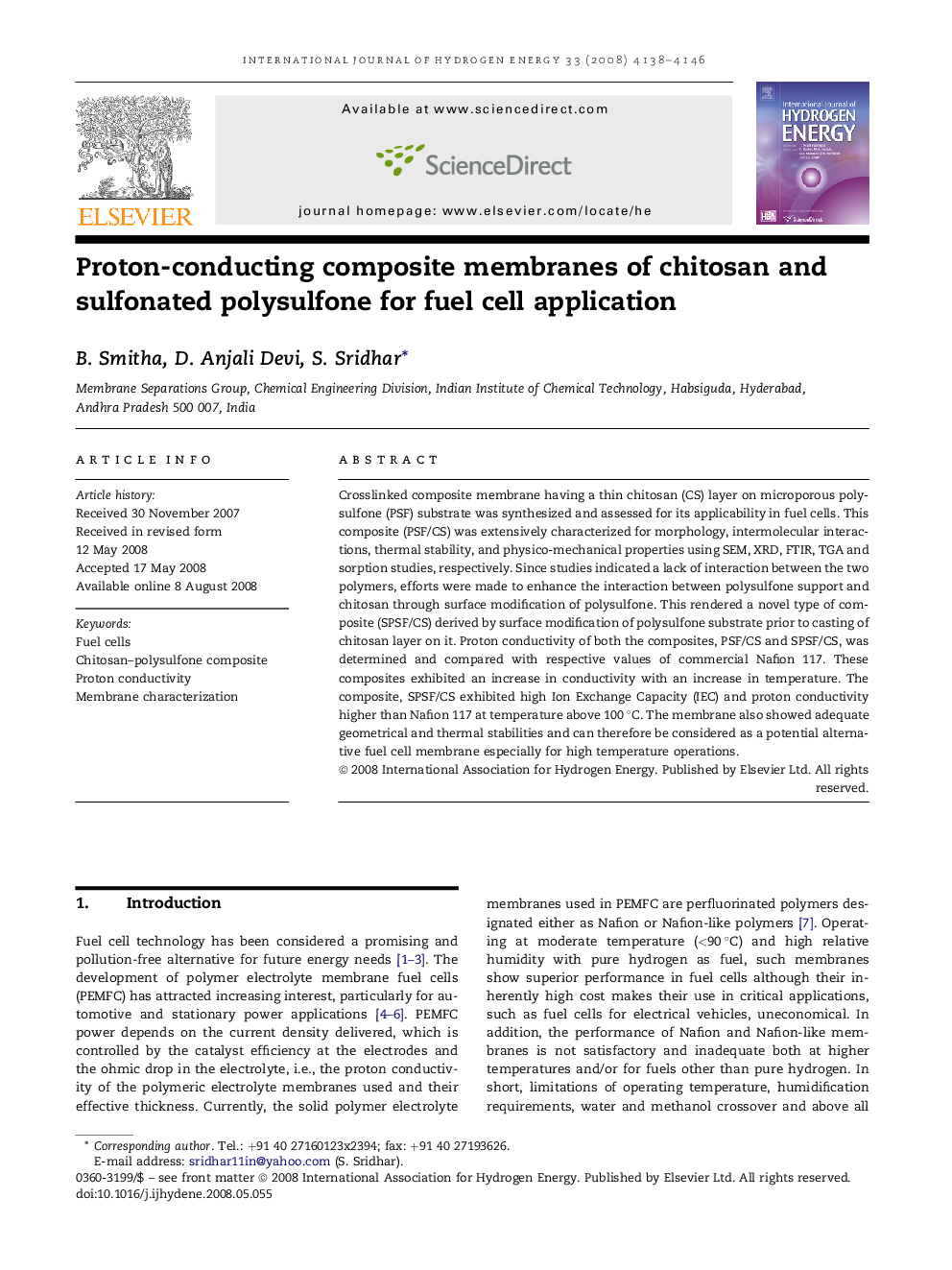| Article ID | Journal | Published Year | Pages | File Type |
|---|---|---|---|---|
| 1278862 | International Journal of Hydrogen Energy | 2008 | 9 Pages |
Crosslinked composite membrane having a thin chitosan (CS) layer on microporous polysulfone (PSF) substrate was synthesized and assessed for its applicability in fuel cells. This composite (PSF/CS) was extensively characterized for morphology, intermolecular interactions, thermal stability, and physico-mechanical properties using SEM, XRD, FTIR, TGA and sorption studies, respectively. Since studies indicated a lack of interaction between the two polymers, efforts were made to enhance the interaction between polysulfone support and chitosan through surface modification of polysulfone. This rendered a novel type of composite (SPSF/CS) derived by surface modification of polysulfone substrate prior to casting of chitosan layer on it. Proton conductivity of both the composites, PSF/CS and SPSF/CS, was determined and compared with respective values of commercial Nafion 117. These composites exhibited an increase in conductivity with an increase in temperature. The composite, SPSF/CS exhibited high Ion Exchange Capacity (IEC) and proton conductivity higher than Nafion 117 at temperature above 100 °C. The membrane also showed adequate geometrical and thermal stabilities and can therefore be considered as a potential alternative fuel cell membrane especially for high temperature operations.
